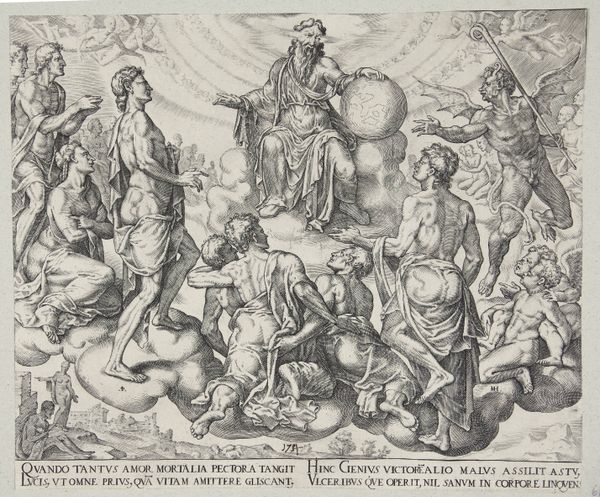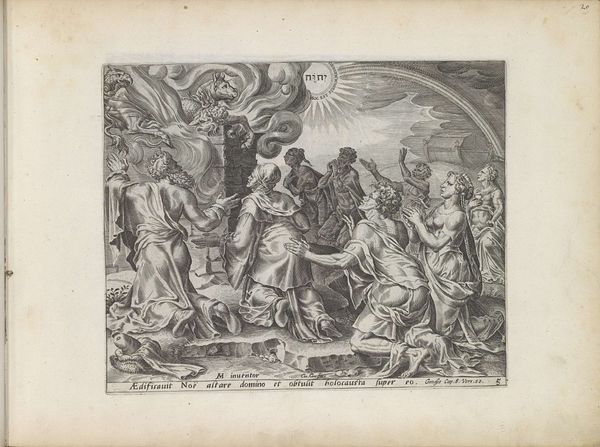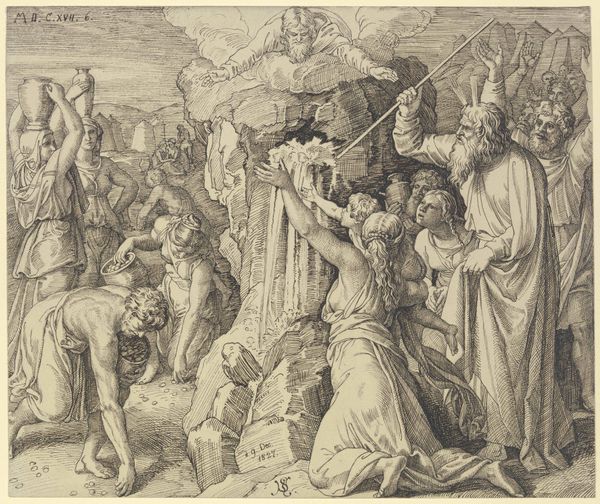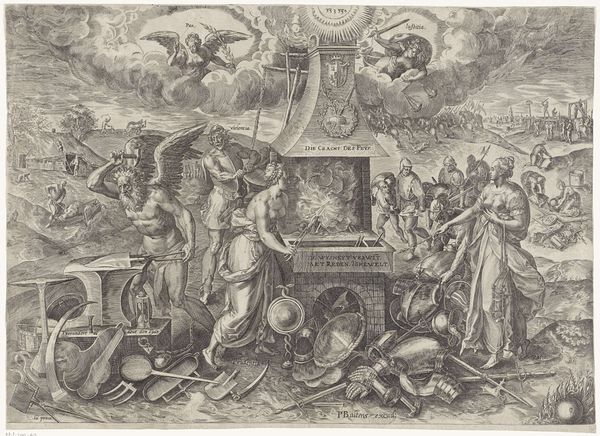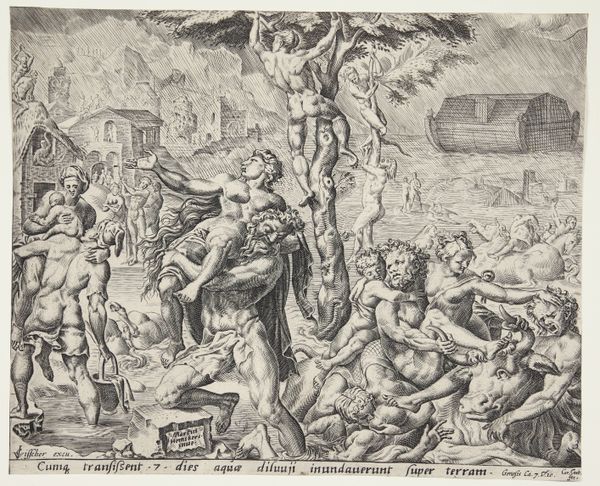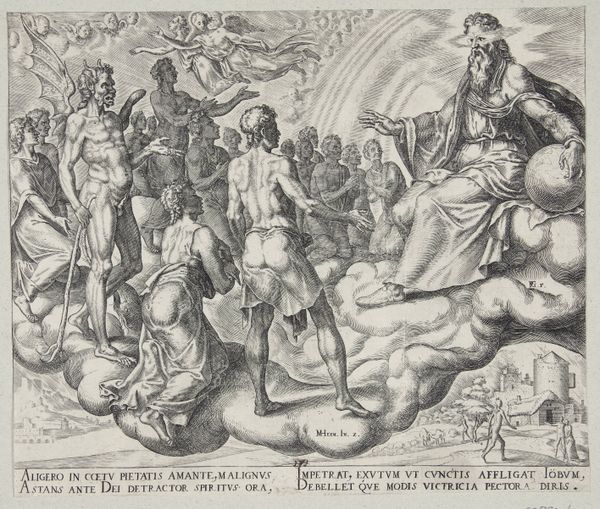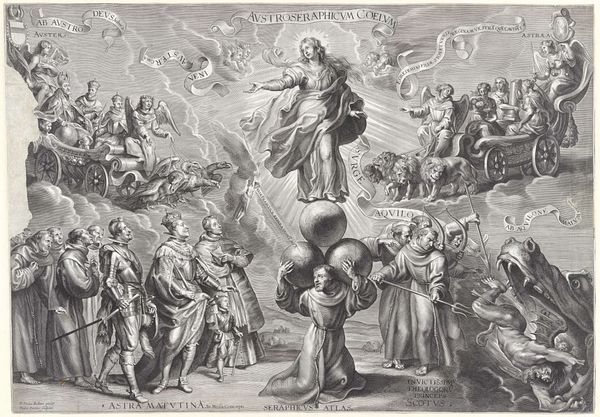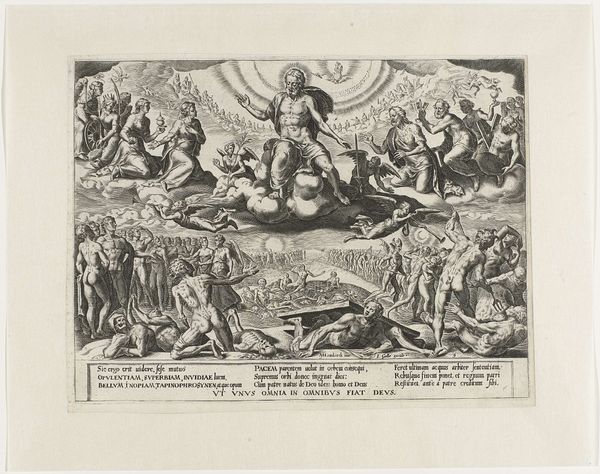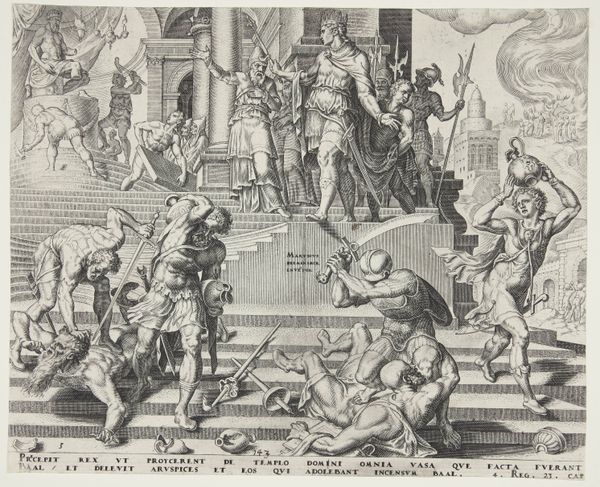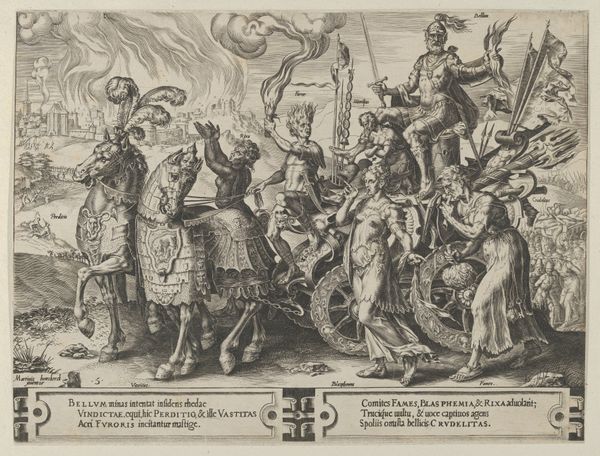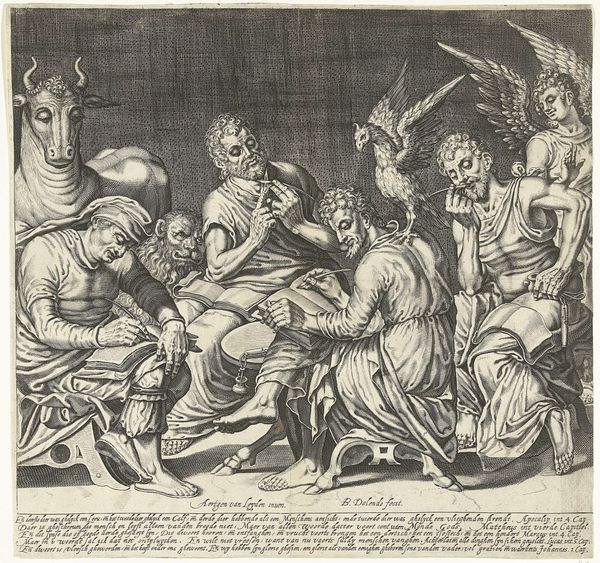
print, engraving
#
pen drawing
# print
#
mannerism
#
figuration
#
history-painting
#
engraving
Dimensions: 200 mm (height) x 250 mm (width) (monteringsmaal), 201 mm (height) x 241 mm (width) (bladmaal)
Cornelis Cort created this engraving, "Noah's Sacrifice," around 1570, now held at the Statens Museum for Kunst. The composition immediately draws your eye to the altar, rising as a dark, vertical pillar against the sky. Look closely at the textures Cort achieves through varying densities of lines, creating depth and shadow. Notice how Noah and his family are arranged around this central form, their bodies angled in gestures of prayer and supplication. The rainbow arcing overhead serves not just as a visual counterpoint to the altar’s rigid form, but also as a signifier of divine promise. Cort uses the technique of chiaroscuro to emphasize the drama, a play of light and dark that was a signature of the Mannerist style. What does this contrast between the solid, material altar and the ethereal promise of the rainbow convey? Perhaps it's a meditation on faith, poised between the tangible act of sacrifice and the intangible hope for redemption. Consider how these formal elements work together to offer a complex narrative about humanity's relationship with the divine.
Comments
No comments
Be the first to comment and join the conversation on the ultimate creative platform.

